Removal Procedure
Caution: Unless directed otherwise, the ignition and start switch must be in the OFF or LOCK position, and all electrical loads must be OFF before servicing
any electrical component. Disconnect the negative battery cable to prevent an electrical spark should a tool or equipment come in contact with an exposed electrical terminal. Failure to follow these precautions may result in personal injury and/or damage to
the vehicle or its components.
- Disconnect the negative battery cable.
- Remove the case side cover. Refer to
Control Valve Body Cover Replacement
.

Important: The oil pump assembly has a pump slide, seal, vanes and rotor that are factory selected for size. Do not switch parts with another pump.
- Remove the oil pump cover bolt (205).
- Remove the oil pump cover (201).
- Remove the pump rotor (210) and the vane rings (209).
- Remove the vanes (211), the oil seal ring (212) and the slide O-ring seal (213).
Caution: Valve springs can be tightly compressed. Use care when removing retainers
and plugs. Personal injury could result.
- Remove the outer and inner oil pump prime springs (222,223).
- Remove the pump slide seal (220) and the slide seal support (221).
- Remove the pump slide pivot pin (215).
- Remove the pump outlet screen assembly (219).
Installation Procedure
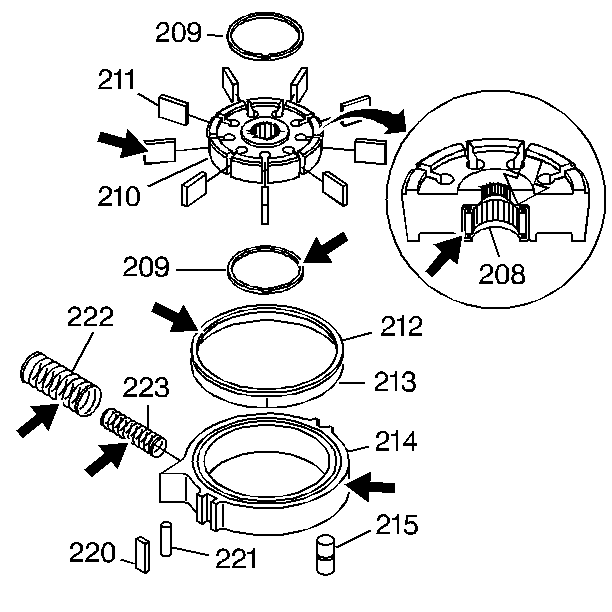
- Inspect the oil pump for:
| • | Worn, scored or gouged pump slide (214) |
| • | Cracks, wear or damage to the rotor (210) or the vanes (211) |
| • | Cuts or damage to the seals (212, 213, 220, 221) |
| • | Broken priming springs (222, 223) |
| • | Damaged oil pump drive shaft bearing (208) (the bearing is not serviced separately from the rotor). |
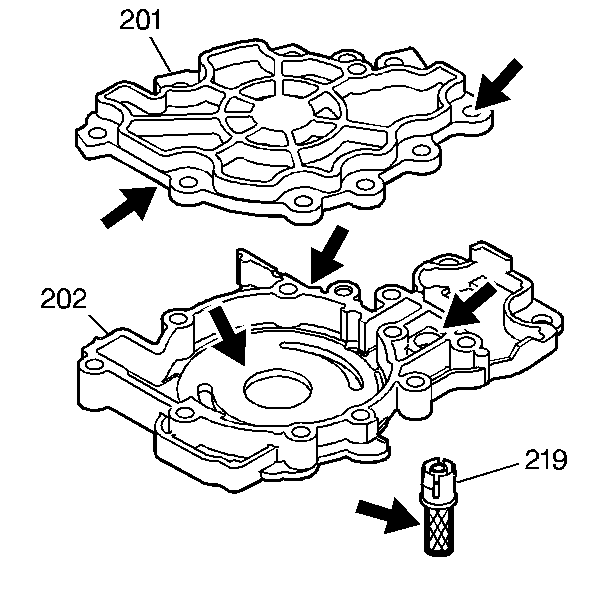
- Inspect the oil pump body (202) for:
| • | A worn, scored or damaged pump pocket |
| • | Interconnected oil passages |
| • | Damaged machined surfaces |
- Inspect the pump outlet screen assembly (219) for damage or debris.
- Inspect the oil pump cover (201) for cracks, wear or gouges from the pump vanes.
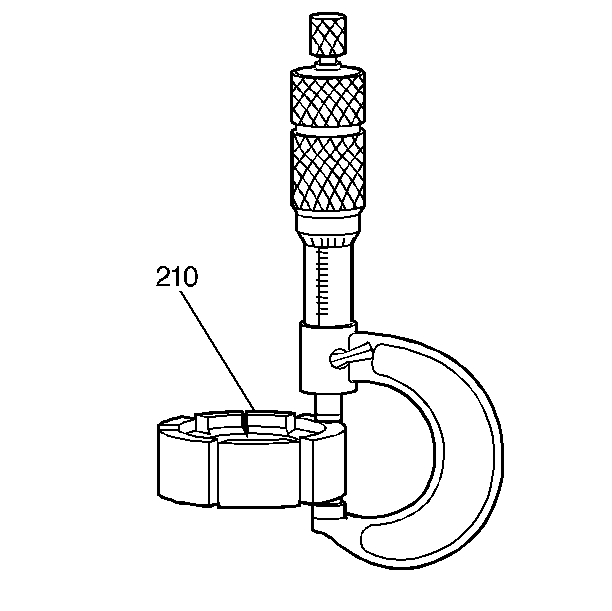
Important: Laser marks on the oil pump body indicate the size of the selective parts which were used in assembly. If the correct parts are not selected for replacement, damage to the oil pump and to the transmission will occur.
- Measure the pump rotor (210).
- Select the proper replacement size. Refer to the Rotor Selection table found in
Oil Pump Specifications
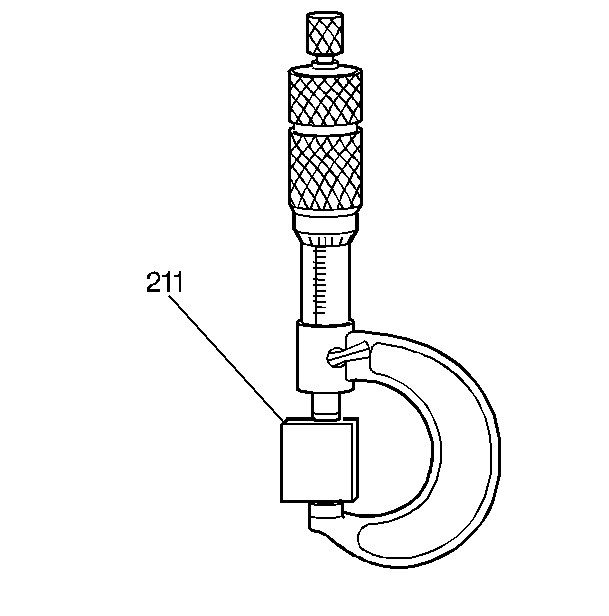
- Measure the oil pump vanes (211).
- Select the proper replacement size. Refer to the Vane Selection table found in
Oil Pump Specifications
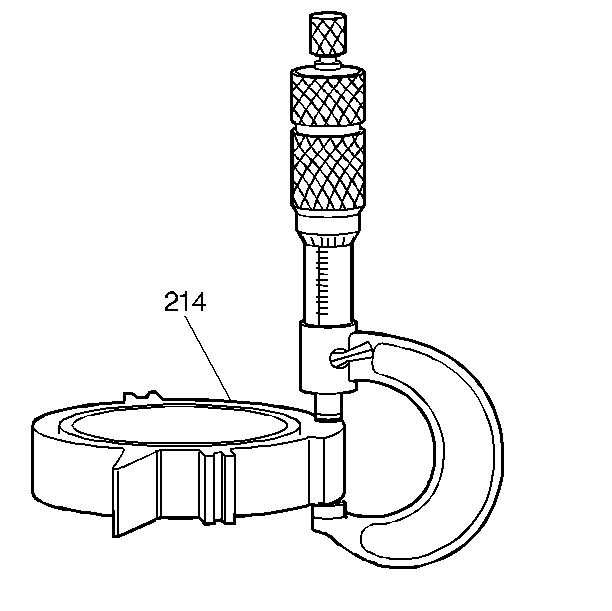
- Measure the oil pump slide (214).
- Select the proper replacement size. Refer to the Slide Selection table found in
Oil Pump Specifications

- Insert the pump outlet screen assembly (219).
- Insert the pump slide seal support (221) and the pump slide seal (220) into the slot on the pump slide (214).
- Insert the pump slide (214) and the slide pivot pin (215) into the pump body (202).
- Install the outer and the inner priming springs (222, 223) as an assembly into the pump body (202).
- Install the first vane ring (209) into the pump body (202).
- Insert the pump slide O-ring seal (213) and the pump slide oil seal ring (212) into the pump slide (214).
- Insert the rotor (210) into the pump body (202).
- Install the pump vanes (211) into the rotor (210). The pump vanes (211) must be flush with the top of the rotor (210).
- Install the second vane ring (209) onto the top of the rotor (210).
Notice: Use the correct fastener in the correct location. Replacement fasteners
must be the correct part number for that application. Fasteners requiring
replacement or fasteners requiring the use of thread locking compound or sealant
are identified in the service procedure. Do not use paints, lubricants, or
corrosion inhibitors on fasteners or fastener joint surfaces unless specified.
These coatings affect fastener torque and joint clamping force and may damage
the fastener. Use the correct tightening sequence and specifications when
installing fasteners in order to avoid damage to parts and systems.
- Install the pump cover (201) and the bolt (205).
Tighten
Tighten the bolt to 8 N·m (70 lb in).
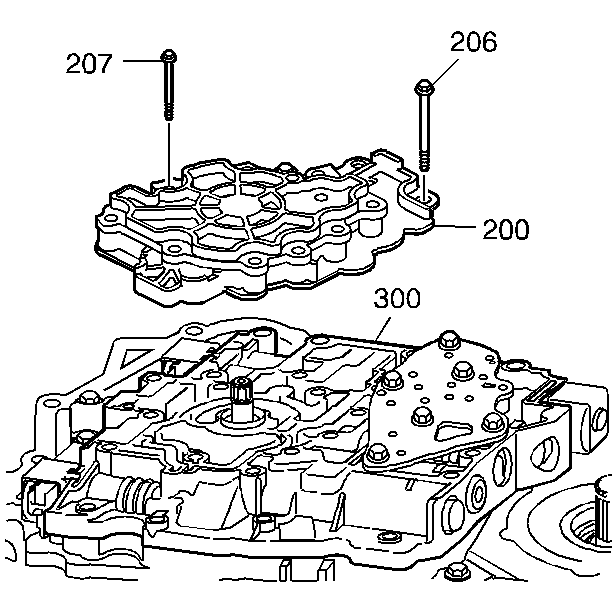
- Install the oil pump assembly (200) onto the control valve assembly (300).
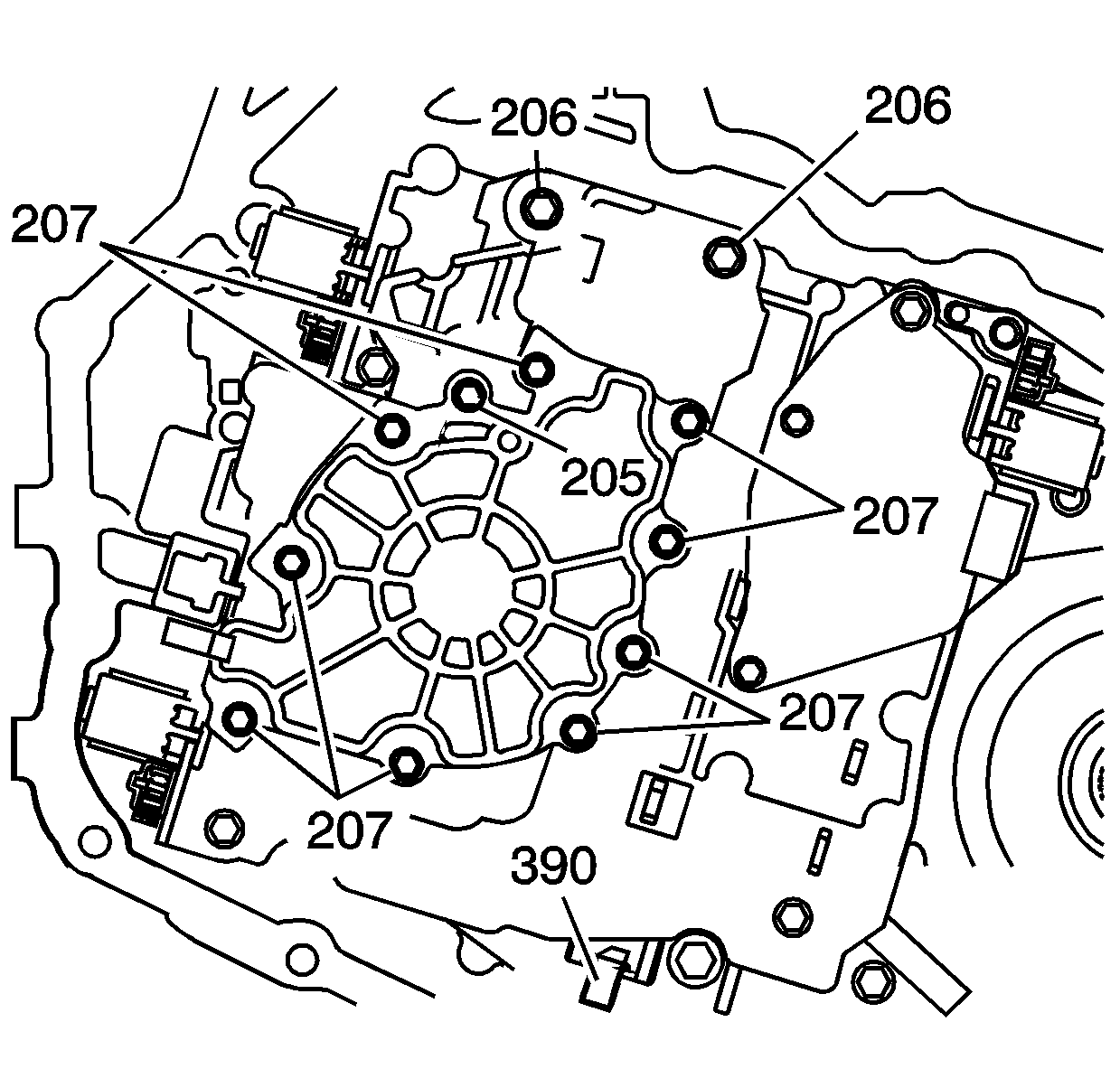
- Install the two pump body to case bolts (206) and the nine pump cover to case cover bolts (207).
Tighten
Tighten the bolts to 12 N·m (106 lb in).
- Install the case side cover. Refer to
Control Valve Body Cover Replacement
.
- Lower the vehicle.
- Remove the engine support fixture.
- Connect the negative battery cable.
- Check the fluid level. Refer to
Fluid Capacity Specifications
Important: It is recommended that transmission adaptive pressure (TAP) information be reset.
Resetting the TAP values using a scan tool will erase all learned values in all cells. As a result, The ECM, PCM or TCM will
need to relearn TAP values. Transmission performance may be affected as new TAP values are learned.
- Reset the TAP values. Refer to
Adapt Function
.









